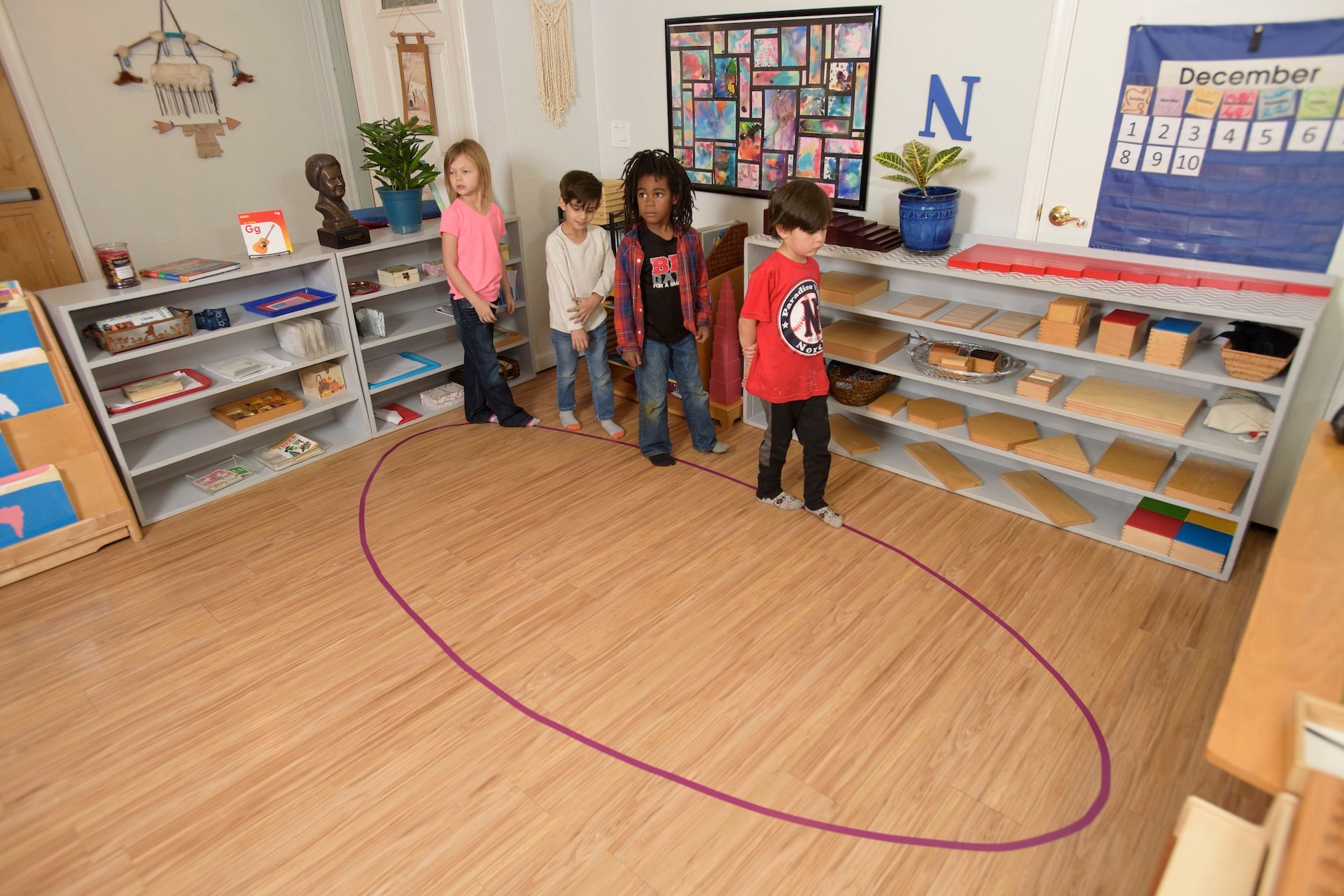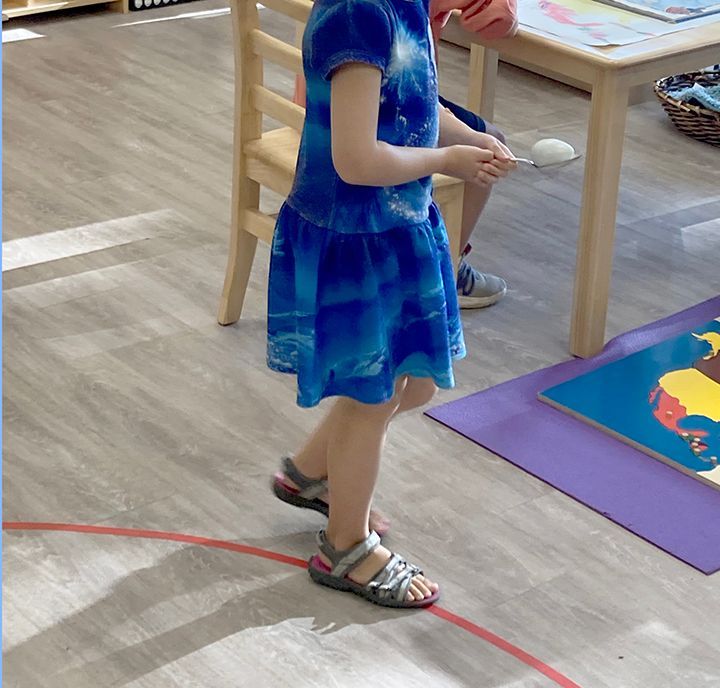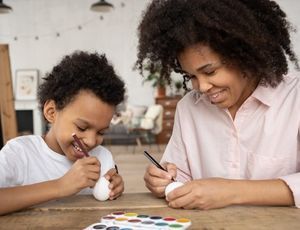Our young children are developing their body control, concentration, and equilibrium. So in Montessori, we intentionally provide opportunities for them to practice these skills.
Dr. Maria Montessori was especially curious about helping children acquire equilibrium. She developed the “walking on the line” exercises after observing children's interest and delight in walking on curbs or along any line they could find.
What is Walking on the Line?
We first start by creating a designated place for children to practice the balance, control, and focus needed to walk along a line. The “line” is often in the shape of an ellipse and can be in the classroom, another indoor space, or even outdoors. The line can be temporary (e.g. chalked on the ground), slightly more enduring (e.g. created with fabric or electrical tape on the floor), or painted onto the surface for a more permanent line.
Walking on the line is a favorite activity and although it is mostly found in primary classrooms, elementary children also enjoy walking on the line challenges, too!
Preliminary Activities
The first activity on the line is simply walking on it with natural steps. That being said, we start with preliminary exercises to help children master small components to ensure success when multiple children are involved.
The first stage is learning how to come to the line. We introduce a signal (e.g. one drumbeat) and show children how to put their toes on the line and face towards the center when they hear that signal. Then we play a short game with the children. We might have them hop inside the line, then use the signal as an indication to come back to the line, or go for a walk and come back to the line, take a step backward and come back to the line, and so forth. All of this is to practice hearing the signal and coming to the line in the designated way.
When children can do this consistently, we may introduce another challenge. This time, with a new signal (perhaps two drumbeats), children learn how to make space so they can spread out on the line without touching their neighbors.
With this mastered, children are ready to learn how to turn to face the same direction. We often need to assist so children learn how facing the same way means looking at the back of their neighbor’s head (rather than at another student’s eyes). This new skill requires a new signal (e.g. rubbing the drum)!
Learning and practicing these various preliminary activities can take a series of days or even weeks. We take our time, rather than rushing the process, as children find delight with each component. Once they know all three signals, children love playing a game that incorporates coming to the line, making space, and turning to face the same direction.
Walking with Changing Rhythms
When children are walking consistently to a beat, we let the children know we may change the beat and they can change their steps to follow the beat. We start with the natural beat, then introduce different modulations, from speeding up, coming back to a natural rhythm, slowing down, to coming back to the original beat. We always end with the natural rhythm, for it brings children back to a place of calm.
Rhythm Exercises
When children have made good progress with their equilibrium, we can help them turn their attention to walking on the line with music. We may use the bells, tone bars, or prerecorded music, so children can walk on the line when they hear the music and stop when the music stops. We eventually introduce different types of music that inspire different types of movement, from walking to marching to galloping or skipping.
Alternating between the types of music helps children become attuned to how their movements change according to what they hear. We always end with a slow, sedate walk on the line to bring everyone’s heart rate and energy level down.
Movement as Expression
With all of the walking on the line activities, children begin to become more aware of what they can do with their bodies and as a result, develop more conscious control of their movement. Ultimately movement is an essential component of human expression. To see more about how these kinds of movement activities help children’s development, please be sure to
schedule a tour to visit our school!









